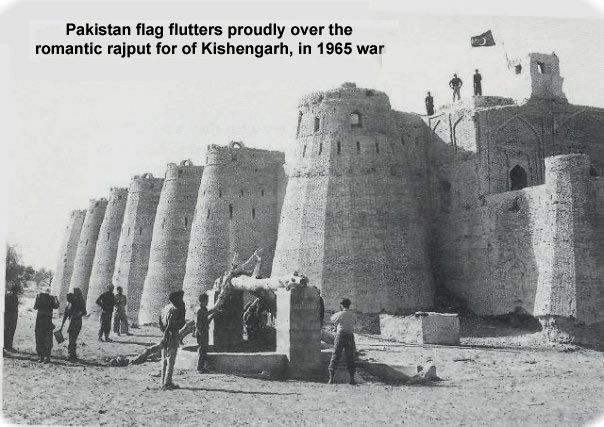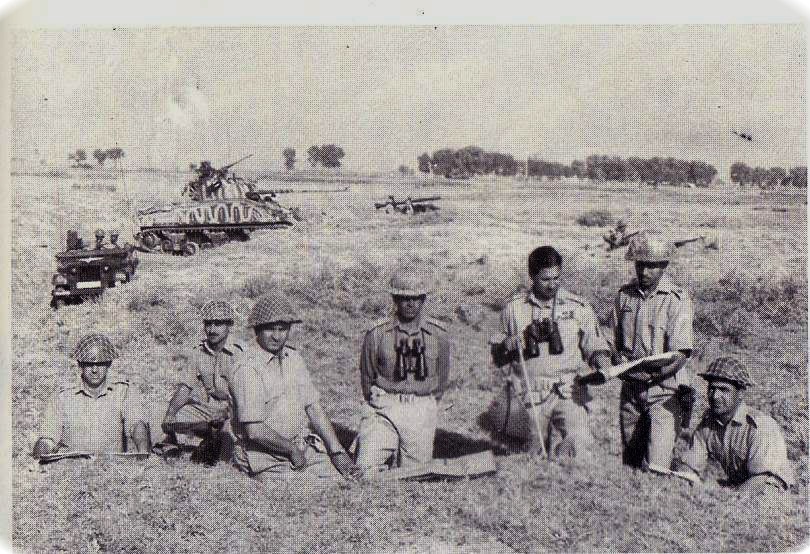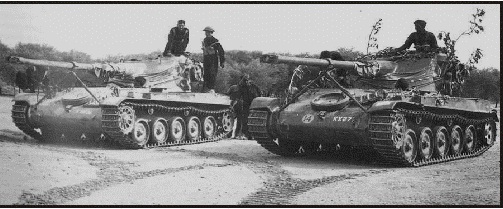By Interaction Desk
The Battle of Chawinda, which took place during the 1965 Indo-Pakistani War, was one of the largest tank battles since the Second World War.
It has been claimed that as many as two thousand tanks took part in the battle, and that the Battle of Kursk has been the only tank battle that involved more tanks. It is known that during the Battle of Chawinda, each side had at least several hundred tanks. Both the Pakistanis and the Indians had Sherman tanks. The Indians also had Centurion tanks, while the Pakistanis also had Patton tanks.
The battle took place in the Ravi-Chenab corridor, which connects Jammu and Kashmir with the Indian mainland. It lasted from September 6 to September 22, 1965.
India’s goal was to break up the Pakistani supply line by cutting off the city of Sialkot from the city of Lahore.
The plan was for the Indians to attack from the region around Samba, east of Jammu, move southwest, and cut off the road between Jammu and Sialkot.
On the night of September 6, Indian artillery began shelling Pakistani forces stationed on both sides of Jassar Bridge. The Pakistani counterattack included blowing up part of the bridge.
The Indians captured some border villages on the night of September 7, while fighting was still going on at the bridge.
On September 8, Indian forces began moving toward Chawinda, in the Sialkot district. Pakistani aircraft fired at advancing Indian tanks but did not cause much damage to the tanks. Some tank against tank fighting then took place.
The Indian moved on to the Phillora region. A huge tank battle took place there on September 11. The Pakistanis were heavily outnumbered, and the Indians were able to capture Phillora.
Next, the Indians began moving toward Chawinda. They planned to capture Chawinda and gain control of the railway that ran from Pasrur to Sialkot.
Meanwhile, the Pakistanis received reinforcements.
On the way to Chawinda, the Indians captured the town of Zafarwal and then lost it. The Pakistanis, now supplied with more Patton tanks, were able to prevent the Indians from reaching Chawinda for several days.
Fighting began around Chawinda on September 16.
The Indians incurred the most losses during the fighting. More than 120 Indian tanks were lost, while only about 40 Pakistani tanks were lost.
The real heroes of Chawinda were Colonel Nisar and his unit whatever their perception or misperception, not knowing what was in front of them , and thankfully so, for this may have reduced their resolution to make a resolute stand, saved Pakistan on 8th September by their most heroic resistance in Gadgor area. General Ibrar who entered the scene albeit after the really decisive engagement of Gadgor had been fought played a decisive role in keeping the Pakistani position intact after fiascos like Phillora and by prodding Brigadier Abdul Ali Malik not to panic on the fateful 16th of September. The Indians made the Pakistani task easier by pure and unadulterated military incompetence at unit and brigade level ! There is no doubt that nothing could have stopped them from reaching the MRL on 8th 9th 10th and 11th September, had they possessed an armored brigade or divisional commander of even a medium caliber! The Indian failure commenced from division and brigade and not from troop and squadron level. At tank, tank troop and tank squadron level, both sides fought equally level! It was at brigade and divisional level that the Indians failed on 8th 9th 10th and 11th September
On September 21, Indian forces withdrew.
The following day, the UN Security Council called for a ceasefire.
The war ended on September 23.


